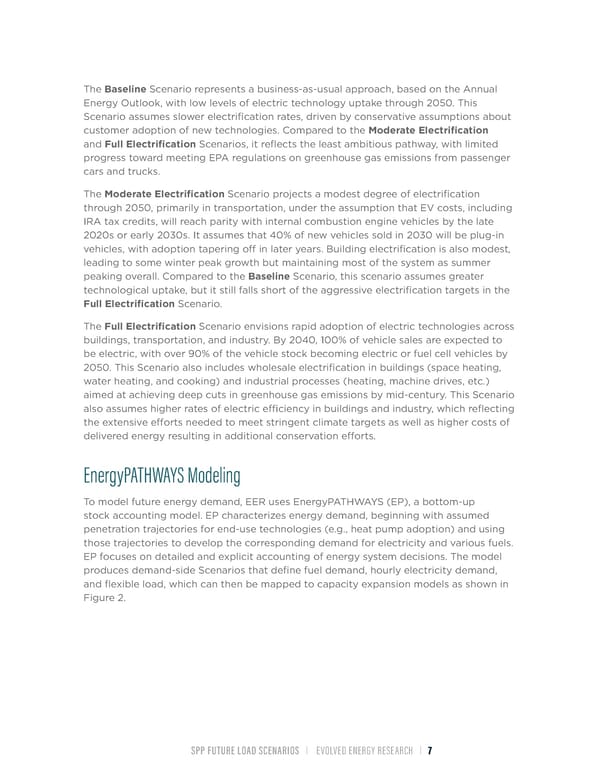The Baseline Scenario represents a business-as-usual approach, based on the Annual Energy Outlook, with low levels of electric technology uptake through 2050. This Scenario assumes slower electrification rates, driven by conservative assumptions about customer adoption of new technologies. Compared to the Moderate Electrification and Full Electrification Scenarios, it reflects the least ambitious pathway, with limited progress toward meeting EPA regulations on greenhouse gas emissions from passenger cars and trucks. The Moderate Electrification Scenario projects a modest degree of electrification through 2050, primarily in transportation, under the assumption that EV costs, including IRA tax credits, will reach parity with internal combustion engine vehicles by the late 2020s or early 2030s. It assumes that 40% of new vehicles sold in 2030 will be plug-in vehicles, with adoption tapering off in later years. Building electrification is also modest, leading to some winter peak growth but maintaining most of the system as summer peaking overall. Compared to the Baseline Scenario, this scenario assumes greater technological uptake, but it still falls short of the aggressive electrification targets in the Full Electrification Scenario. The Full Electrification Scenario envisions rapid adoption of electric technologies across buildings, transportation, and industry. By 2040, 100% of vehicle sales are expected to be electric, with over 90% of the vehicle stock becoming electric or fuel cell vehicles by 2050. This Scenario also includes wholesale electrification in buildings (space heating, water heating, and cooking) and industrial processes (heating, machine drives, etc.) aimed at achieving deep cuts in greenhouse gas emissions by mid-century. This Scenario also assumes higher rates of electric efÏciency in buildings and industry, which reflecting the extensive efforts needed to meet stringent climate targets as well as higher costs of delivered energy resulting in additional conservation efforts. EnergyPATHWAYS Modeling To model future energy demand, EER uses EnergyPATHWAYS (EP), a bottom-up stock accounting model. EP characterizes energy demand, beginning with assumed penetration trajectories for end-use technologies (e.g., heat pump adoption) and using those trajectories to develop the corresponding demand for electricity and various fuels. EP focuses on detailed and explicit accounting of energy system decisions. The model produces demand-side Scenarios that define fuel demand, hourly electricity demand, and flexible load, which can then be mapped to capacity expansion models as shown in Figure 2. SPP FUTURE LOAD SCENARIOS | EVOLVED ENERGY RESEARCH | 7
 Future Load Scenarios for Southwest Power Pool Page 8 Page 10
Future Load Scenarios for Southwest Power Pool Page 8 Page 10